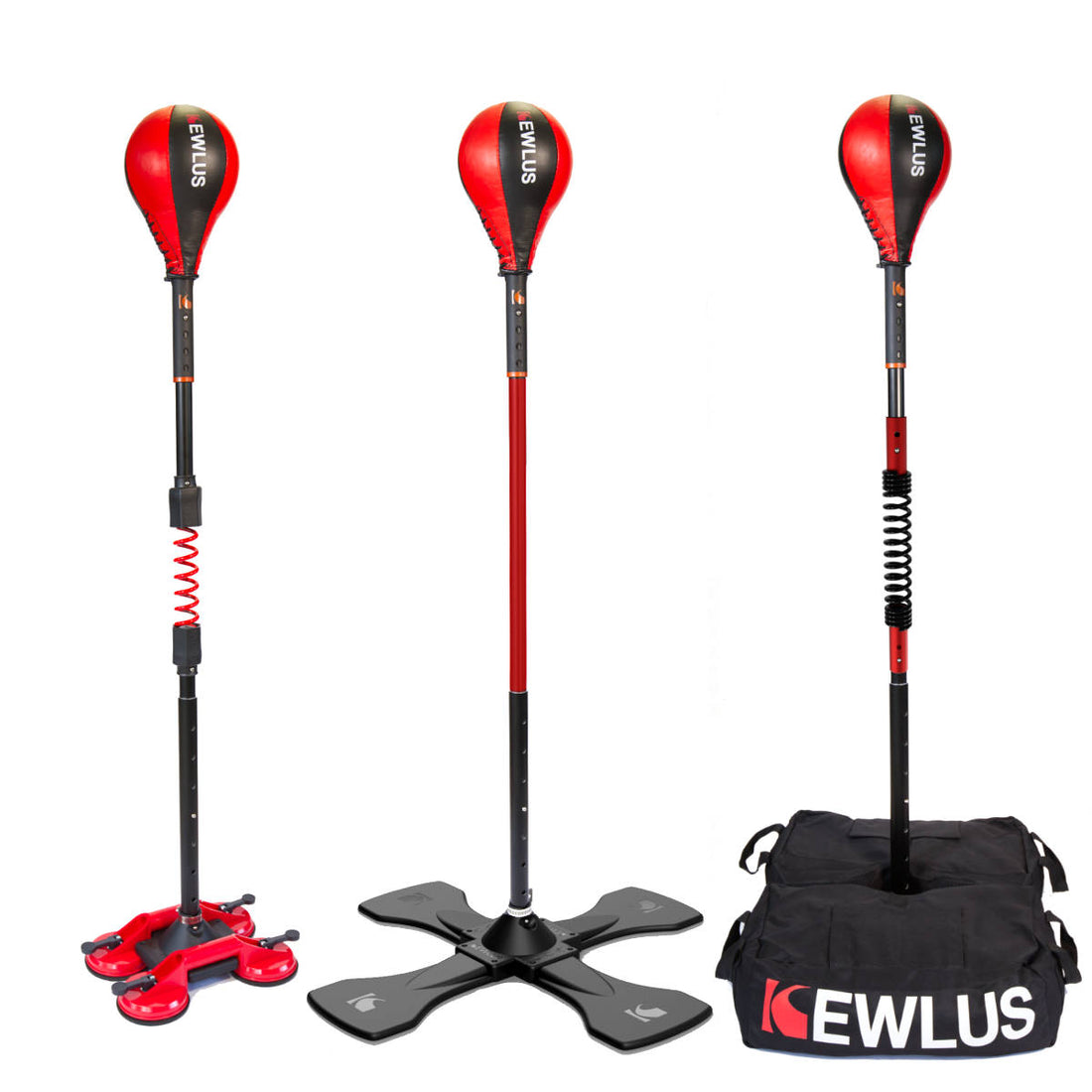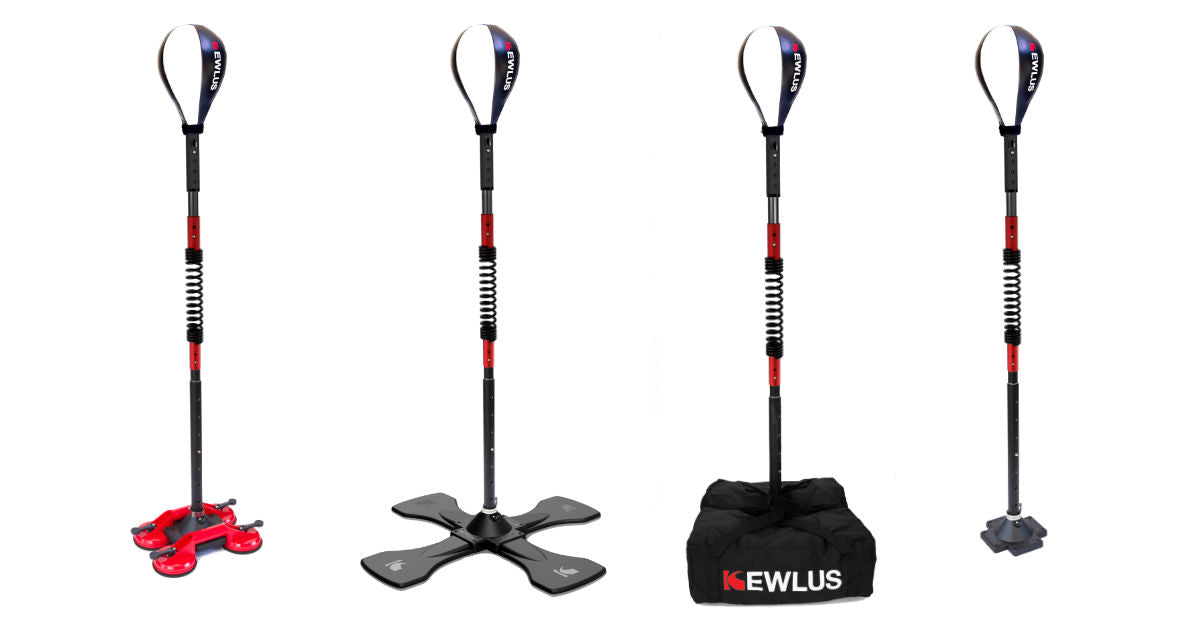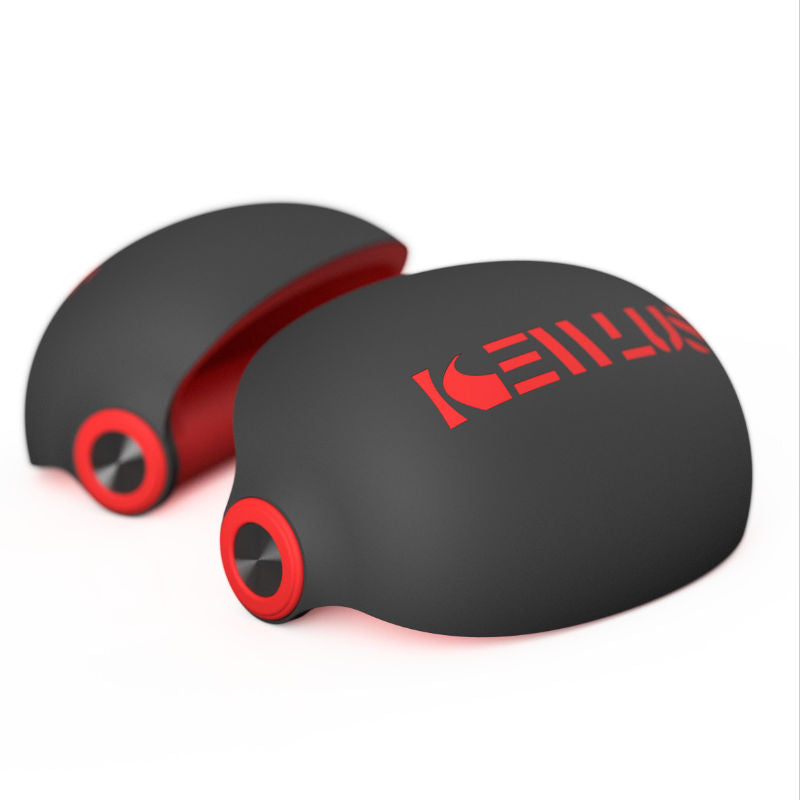
Cobra Bags Explained
Share
What is a cobra bag?
The cobra bag is a type of reflex punching bag that incorporates a football-sized ball on top of a rod or pole that is able to flex back and forth. It's generally configured to be at chin level, and when punched, designed to return to the user's chin simulating a counter punch. There are two types of cobra bags: one type that uses a spring to flex; and the other that uses a flexible rod. There are also many subtle differences that are outlined in the Anatomy of a Cobra Bag section below.
Why a cobra bag?
The cobra bag is one of the best training tools that a boxer can have to develop a high level of hand-eye coordination and defensive reflexes. The interactive nature of the cobra bag makes it fun to train with. Even if you're not into boxing, but simply want a fun, interactive and challenging way to exercise your whole body, the cobra bag will give you that and more.
Here are some of the key reasons for using a cobra bag in your training routine:
- It's fun. It's fun because it is interactive and will punish you if you don't keep your eyes on the ball and dodge it when it comes back at you.
- It works out all the key muscle groups in your body, especially your shoulders, core and legs as you need to punch the bag, then move side to side to avoid getting hit.
- The bag motivates the user to sustain the rhythmic motion, thus encouraging a prolonged cardio workout. In combination with background music that closely matches the rhythm of the bag it can make for a fun and highly motivating cardio workout. Just 3 x 3-minute rounds with 30 second breaks will give you a workout equivalent to an hour on the treadmill.
- It teaches key self defence principals and over time generates muscle memory for moving side to side in order to avoid getting hit.
- It's easy to set up, and with some designs like the modular Kewlus Cobra Bag Kit it's also easy to put away after each use, making it accessible to every home and not just the gym.
Anatomy of a Cobra Bag
The key components of a cobra bag include the base, the mast and the ball.
There are two types of cobra bags: one type that uses a spring to flex; and the other that uses a flexible rod. The most common of the two is the spring-based cobra bag.
Spring-Based Cobra Bag
The spring-based cobra bag uses a spring for the flexing action of the mast. These are further divided into two sub-categories:
- Spring positioned at the bottom of the mast - this is an entry level type of cobra bag ideal for someone who is starting off as the back and forth movement of the bag is relatively slow. These are quite inexpensive and can be purchased for under $50 at stores like Kmart.
- Spring positioned mid way along the mast, roughly at user's hip level - this is the more advanced version of the two, with faster rebound action. These range in price from around $100 up to $800 plus shipping.
Check out the Spring Based Cobra Bag DIY post for a great example of such a cobra bag.

Flexible Rod Cobra Bag
The second type of cobra bag uses a flexible rod for its mast, thus dispensing the need of a spring. The dynamics are very similar to a spring-based cobra bag with one key difference: There is no single flex point like with a spring, but rather the whole mast flexes, which extends the reach of the cobra bag slightly beyond that of a spring-based version.
Check out the PVC Pipe Cobra Bag DIY post for a great example of such a cobra bag.

The Base
The base is probably the most important component of the cobra bag as it needs to be rock solid and sturdy to allow the bag to flex back and forth. The heavier the bag and the harder the punches, the greater the forces imposed on the base.
Cheaper versions of the cobra bag use a water filled base and position the spring at the very bottom of the mast to reduce the applied forces. There are two main cons of a water-filled base: hard to move after it is filled; and a risk of splitting and incurring water damage.
More advanced versions, like the Kewlus Multi Base give the user a choice of base options, from being able to use suction cups on tiled floors, to screwing it to a wooden deck or concrete slab, to using it with a baseboard or Stabilisers weighed down by two 45 pound (20kg) sand bags. In a home environment, it's a lot easier to put away two 45 pound sandbags with handles than having to drag around a 90 pound water container.
For spring-based cobra bags, especially where the spring is mid-way or hip level, the rigidity of the base is crucial. Minor flexing in the base will result in dampening of the rebound motion of the bag.
The Ball
The characteristics of the ball of the cobra bag will affect the dynamics of the rebound as well as the longevity of the bag.
At the lower end, the balls are made from synthetic materials that generally will not last with regular use. Some are quite large and somewhat soft, targeted towards beginners. Others are made from solid rubber, making the ball quite heavy and greatly reducing the rebound speed.
The ideal cobra bag ball should be around the size and shape of a standard speed bag. In general, the smaller and lighter the ball, the faster it will rebound. However making it too small can take away from the satisfaction of hitting something solid.
The materials used in making the ball (eg. durable and lightweight) as well as the design and craftsmanship (eg. ball shape and stitching) are important in achieving the optimum performance and longevity of the cobra bag.
The Modular Cobra Bag
The latest concept is to have a modular cobra bag where components can be interchanged, upgraded and modified by the user. For example, the ability to switch from a small ball to a larger one, or from a lightweight spring to a heavyweight one, gives the user greater variation in their training as the dynamics of the bag change.
This opens up the capability to integrate DIY components to further enhance or customise the cobra bag. It allows users to also save money by substituting some of the components with off-the-shelf parts such as 3/4 inch pipes from a hardware store at a fraction of the cost.
Being modular also means that when a component breaks long after the warranty has expired, it's very easy and cheap to replace it.



